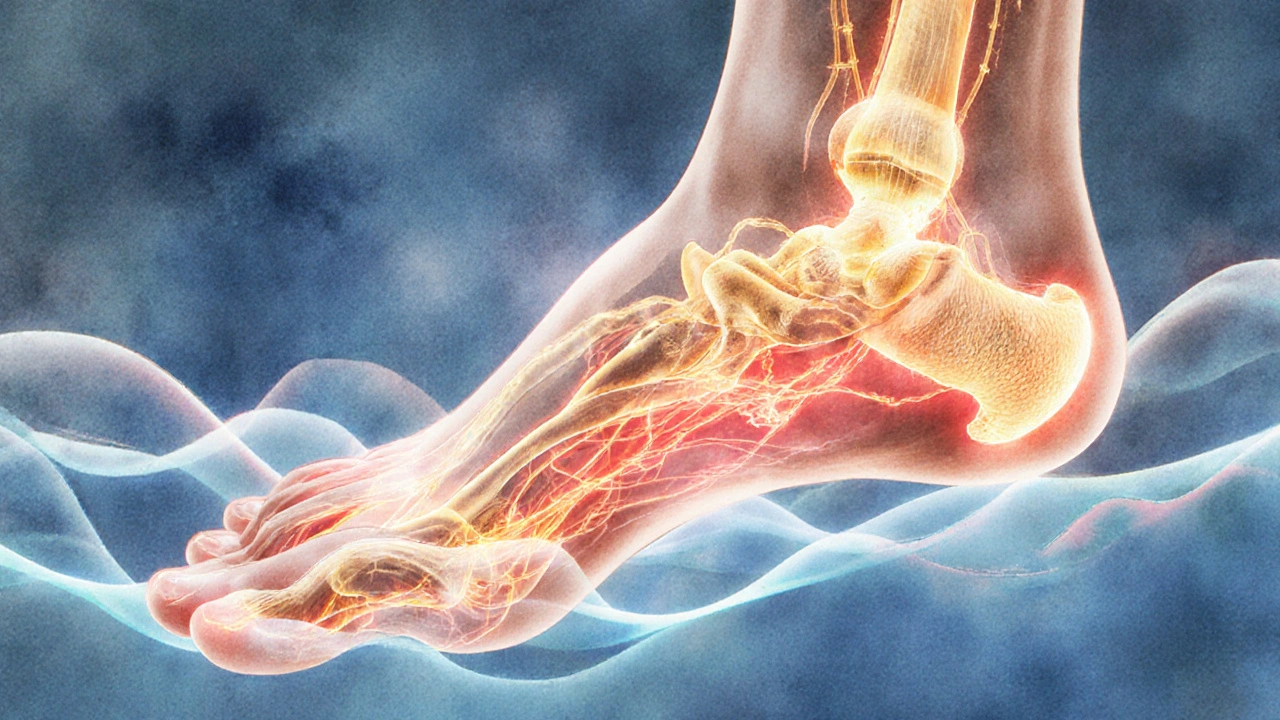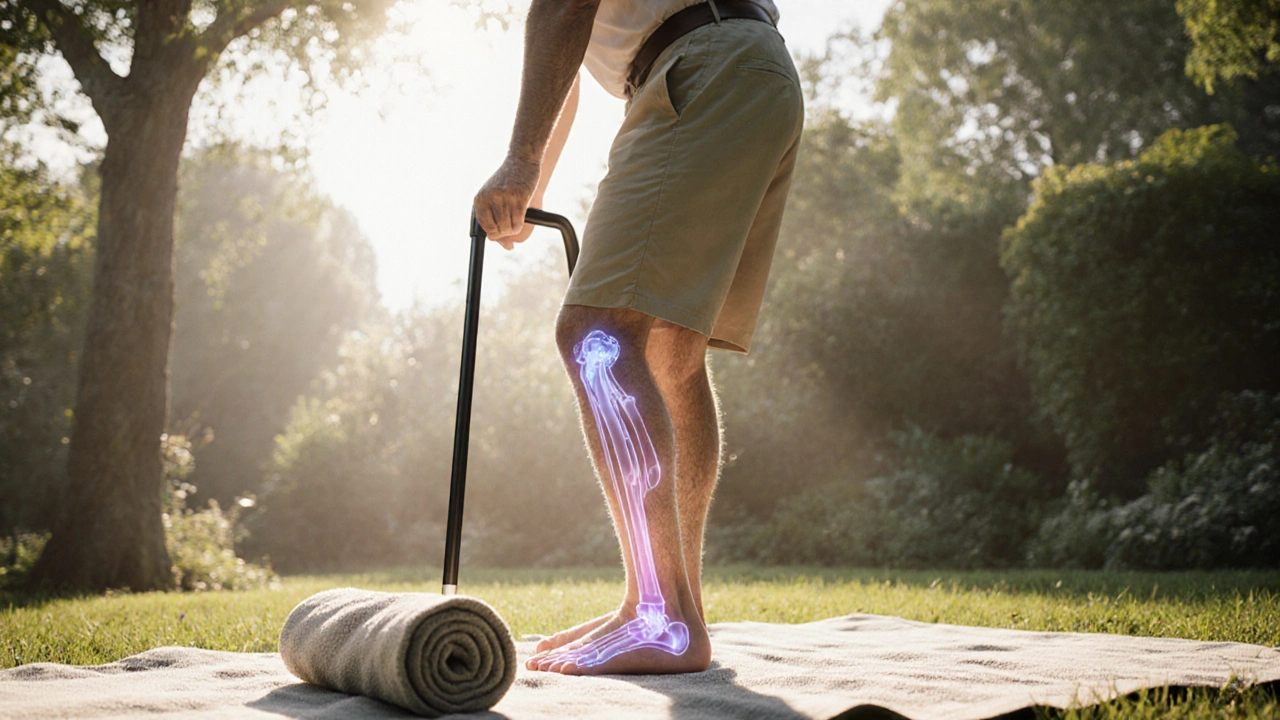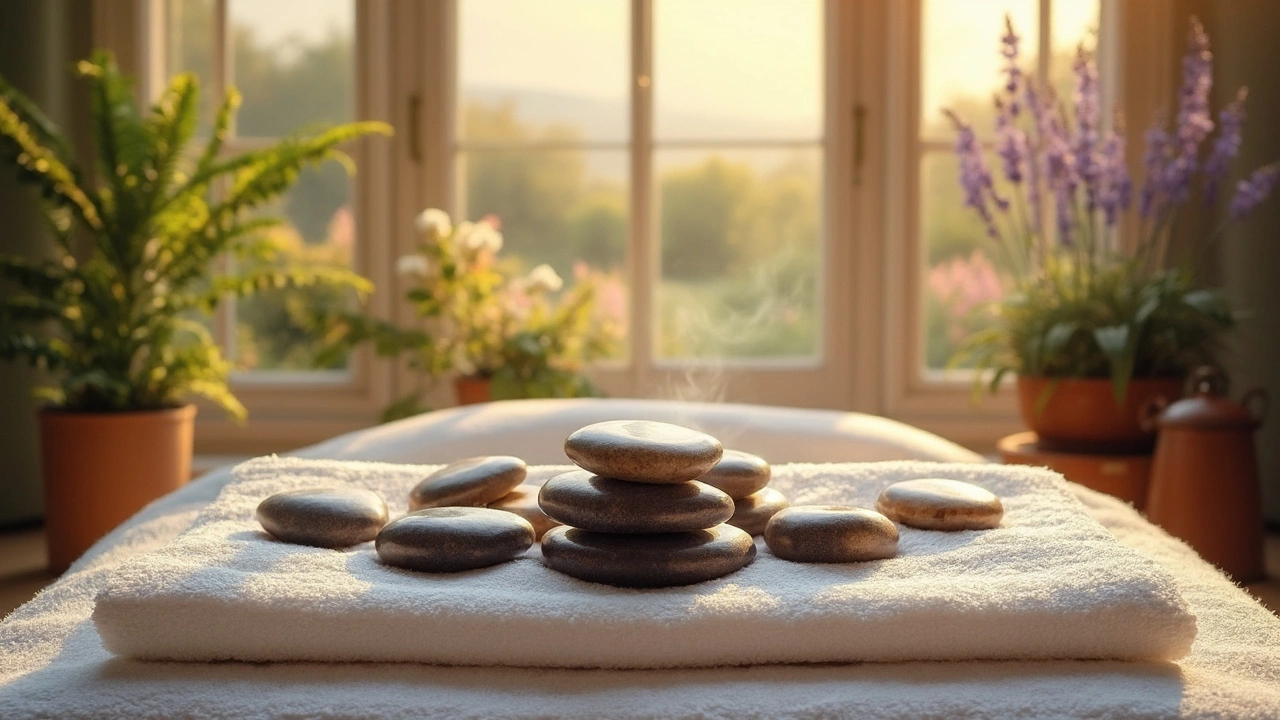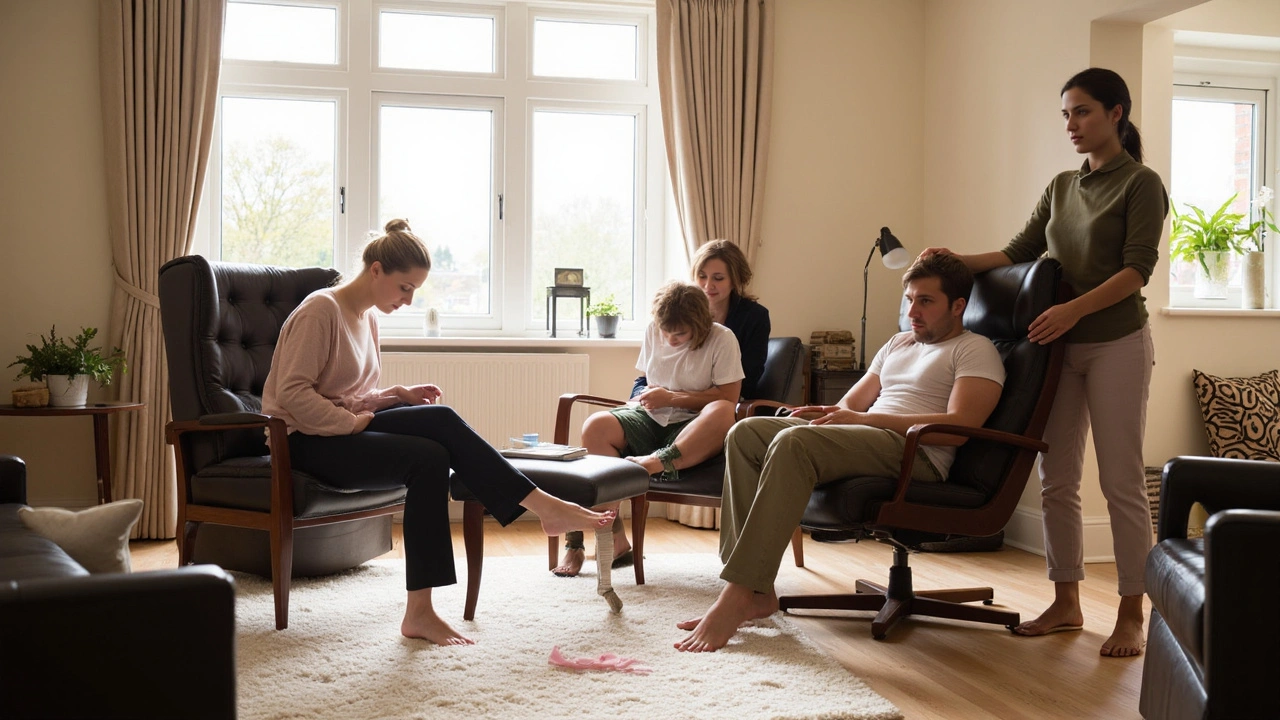The Surprising Benefits of Regular Foot Massage

Most people think of foot massage as a luxury - something you get at a spa after a long week. But if you’ve ever stepped off a long flight or stood all day at work and felt your feet scream for mercy, you know it’s more than a treat. Regular foot massage isn’t just about feeling good for a few minutes. It’s a simple, powerful habit that can improve your whole body’s function - and you don’t need expensive equipment or a professional to start.
Foot massage boosts circulation
Your feet are the farthest from your heart, which means blood flow there can lag. Poor circulation in the feet leads to cold toes, swelling, and even numbness. A 15-minute foot massage, done daily, helps pump blood back up toward your heart. The pressure from your thumbs or a massage ball stimulates capillaries and opens up tiny blood vessels. A 2021 study in the Journal of Bodywork and Movement Therapies found that participants who received daily foot massages for four weeks showed a 22% improvement in peripheral blood flow compared to those who didn’t. That’s not just comfort - it’s healing. Better circulation means faster recovery from injuries, less swelling after standing all day, and even reduced risk of ulcers in people with diabetes.It reduces stress and lowers cortisol
Your feet are packed with nerve endings - over 7,000 in each one. When you massage them, you’re not just touching skin. You’re sending signals straight to your brain’s relaxation center. A 2020 study from the University of Miami showed that people who received regular foot massages had significantly lower levels of cortisol, the body’s main stress hormone. Within just two weeks, participants reported feeling calmer, sleeping better, and reacting less sharply to daily stressors. You don’t need a therapist. Even rubbing your own feet for five minutes before bed can quiet your nervous system. Think of it as a reset button for your mind.Relieves chronic pain - especially in the back and knees
It sounds counterintuitive, but massaging your feet can ease pain in your lower back or knees. That’s because of reflexology points - specific areas on the feet linked to organs and body parts. While reflexology isn’t a cure-all, research supports its role in pain relief. A 2018 trial published in Pain Management Nursing found that patients with chronic lower back pain who received weekly foot massages for six weeks reported a 40% reduction in pain intensity. The same study noted improved mobility. Why? Pressure on the arch and heel triggers nerve pathways that interfere with pain signals going to your spine. It’s like a natural dimmer switch for discomfort.
Improves sleep quality
Struggling to fall asleep? Try massaging your feet for 10 minutes before bed. The combination of warmth, pressure, and relaxation slows your heart rate and lowers your body temperature - two key triggers for sleep. A 2022 survey of 300 adults in Melbourne found that 68% of those who massaged their feet nightly fell asleep 15-20 minutes faster than usual. One participant, a 54-year-old nurse who worked 12-hour shifts, said: “I used to lie awake thinking about the next day. Now, my feet feel heavy and warm, and my mind just shuts off.” You don’t need oils or gadgets. Just sit in a chair, roll a tennis ball under each foot, and breathe slowly.Helps with headaches and sinus pressure
Tension headaches and sinus congestion often start in the neck and shoulders, but they’re linked to pressure points on the feet. The big toe, for example, corresponds to the head and sinuses. Applying firm, circular pressure here for 30 seconds can release built-up tension. A small pilot study from the Australian Institute of Complementary Medicine found that 72% of participants with frequent tension headaches reported fewer episodes after daily foot massage targeting the big toe and ball of the foot. It’s not magic - it’s neurology. The nerves in your feet connect to the trigeminal nerve, which runs through your face and head. Stimulating them can calm overactive signals.Supports better posture and balance
Your feet are your foundation. If they’re tight, stiff, or sore, your whole body compensates. You might lean forward, roll your ankles inward, or shift your weight unevenly. Over time, that leads to hip pain, knee strain, and even spinal misalignment. Regular foot massage loosens the plantar fascia, the thick band of tissue under your arch. When that tissue is flexible, your feet grip the ground better, your stance steadies, and your posture improves naturally. Athletes and older adults benefit the most. One 72-year-old man in Sydney told his physiotherapist: “I stopped using my cane after three weeks of daily foot rolling. I felt grounded again.”
Easy ways to do it at home
You don’t need a spa day. Here’s how to make foot massage part of your routine:- Use a tennis or golf ball. Roll it under each foot for 2-3 minutes. Apply pressure where it feels tight.
- Try thumb pressure. Use your thumbs to press along the arch, heel, and ball of the foot. Hold for 5 seconds at each spot.
- Warm it up. Soak your feet in warm water for 10 minutes first. Add Epsom salts if you have them.
- Use oil or lotion. Coconut or almond oil reduces friction and adds a soothing scent.
- Do it daily. Even five minutes counts. Morning or night - pick a time that sticks.
Some people swear by electric massagers or reflexology charts. But the best tool is your own hands. They’re always available, free, and perfectly calibrated to your body’s needs.
Who should avoid foot massage?
Most people benefit. But if you have:- Active blood clots or deep vein thrombosis
- Severe neuropathy with loss of sensation
- Open wounds, infections, or recent foot surgery
- Advanced diabetes without proper foot checks
...talk to your doctor first. Even then, gentle touch might still be safe - just avoid deep pressure.
What you’ll notice after 2 weeks
If you commit to just 5-10 minutes a day, here’s what you might feel:- Your feet feel warmer, even in winter
- You fall asleep faster
- Your lower back aches less
- You walk more confidently
- You feel calmer, even on busy days
It’s not a miracle. It’s biology. Your body was designed to respond to touch - especially on your feet.
Can foot massage help with plantar fasciitis?
Yes. Daily foot massage helps loosen the tight plantar fascia tissue that causes heel pain. Rolling a frozen water bottle under your arch for 5 minutes reduces inflammation and stretches the tissue. Combine it with calf stretches, and many people see improvement in under two weeks.
Do I need special oils or tools?
No. While oils make it smoother, you can use just your hands. A tennis ball, golf ball, or even a water bottle works fine. The key is consistent pressure - not fancy gear.
How often should I massage my feet?
Daily is ideal, but even 3-4 times a week makes a difference. Five minutes is enough to trigger benefits. Think of it like brushing your teeth - small, regular care prevents bigger problems.
Can foot massage replace medical treatment?
No. It’s a supportive practice, not a cure. If you have chronic pain, swelling, numbness, or open sores, see a doctor. Foot massage complements treatment - it doesn’t replace it.
Why do my feet feel so tense?
Modern life is hard on your feet. Tight shoes, hard floors, long hours standing, and lack of movement cause muscles and connective tissue to tighten. Even walking on pavement all day can create chronic tension. Massage reverses that by restoring blood flow and releasing built-up stress.
If you’ve been ignoring your feet, it’s time to change that. They carry you through every day - the least you can do is give them five minutes of care. The benefits aren’t just physical. They’re mental, emotional, and surprisingly deep. Start tonight. Just roll a ball under your foot while watching TV. You’ll wonder why you didn’t start sooner.



